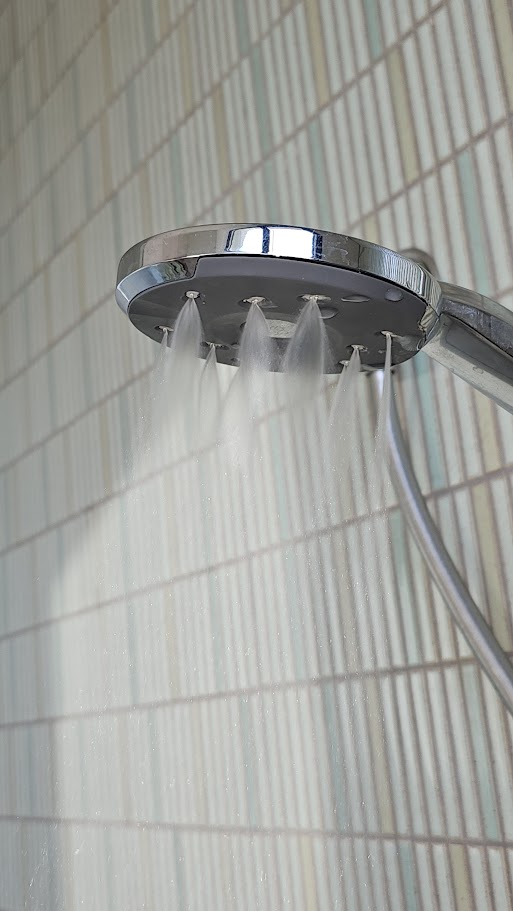Just how well does a small tank perform?
By Richard Keech, 2024-06-10

The question
When we built our new home in 2020, we chose a hot-water service with a tank capacity of only 160L. Despite sometimes having five people in the home, we’ve never been caught short of hot water. However, the question we still pondered was, how long would we have to stay in the shower to actually run out the tank?
Well, we’re not afraid of doing an experiment, so one lazy Sunday morning, we decided to try it out.
What we did
We basically ran the shower till we could no longer maintain a comfortable temperature. The hot-water system (HWS) is set to boost on a timer, once per day. We did the test prior to the daily boost. There had been negligible other use of hot water since the previous day’s boost.
Flow rate. We used a showerhead (pictured) which is very efficient, drawing only 5L/min. It is a Methven Kiri Satinjet, ultralow-flow version, available in Australia from Pure Electric.
Temperature. We measured the water temperature at the nozzle. It was 43C.
Results
At 41 minutes the temperature started to decline, and the mix needed to be adjusted so that it was all hot.
At 46 minutes, the temperature at the nozzle would no longer maintain our 43C, and dropped to 41C.
The temperature at the nozzle continued to decline, as follows.
| Sample | Time elapsed [minutes] | Temperature [C] |
| 1 | 41 | 43 (desired temperature) |
| 2 | 46 | 41 |
| 3 | 50 | 39 |
| 4 | 52 | 35 |
| 5 | 53 | 33 |
| 6 | 54 | 30 |
| 7 | 55 | 26 |
Conservative. This test is conservative in that:
- we haven’t used the booster, so that there’s much more daily hot water available if you simply do a manual boost, or wait till the system does is own boost operation;
- we conducted the test shortly prior to the daily boost, so that the volume of heated water was the least within the daily cycle of variation.
Conclusions
The basic take away is that we have a comfortable 41 minutes of showering available with our small tank, and another few minutes with slightly reduced temperature.
This test proved to us that 160L of tank capacity gives us more than enough for our needs. Indeed, it suggests that many households do not need large hot-water tanks.
Benefits of small tanks. Smaller hot-water tanks are more efficient because:
- their small size means less surface area, which reduces the so-called standing losses from the tank;
- there’s less material;
- they’re easier to fit and less conspicuous. We have ours inside in a hallway cupboard;
- if you do put the tank inside the home’s thermal envelope (common in many countries, but not in Australia), then the standing losses from the tank contribute to the heat within the home, ie., each joule of heat lost from the tank, is a joule that doesn’t have to be provided by the heating system. This is good for a heating-dominant climate, but bad for a cooling-dominant climate.